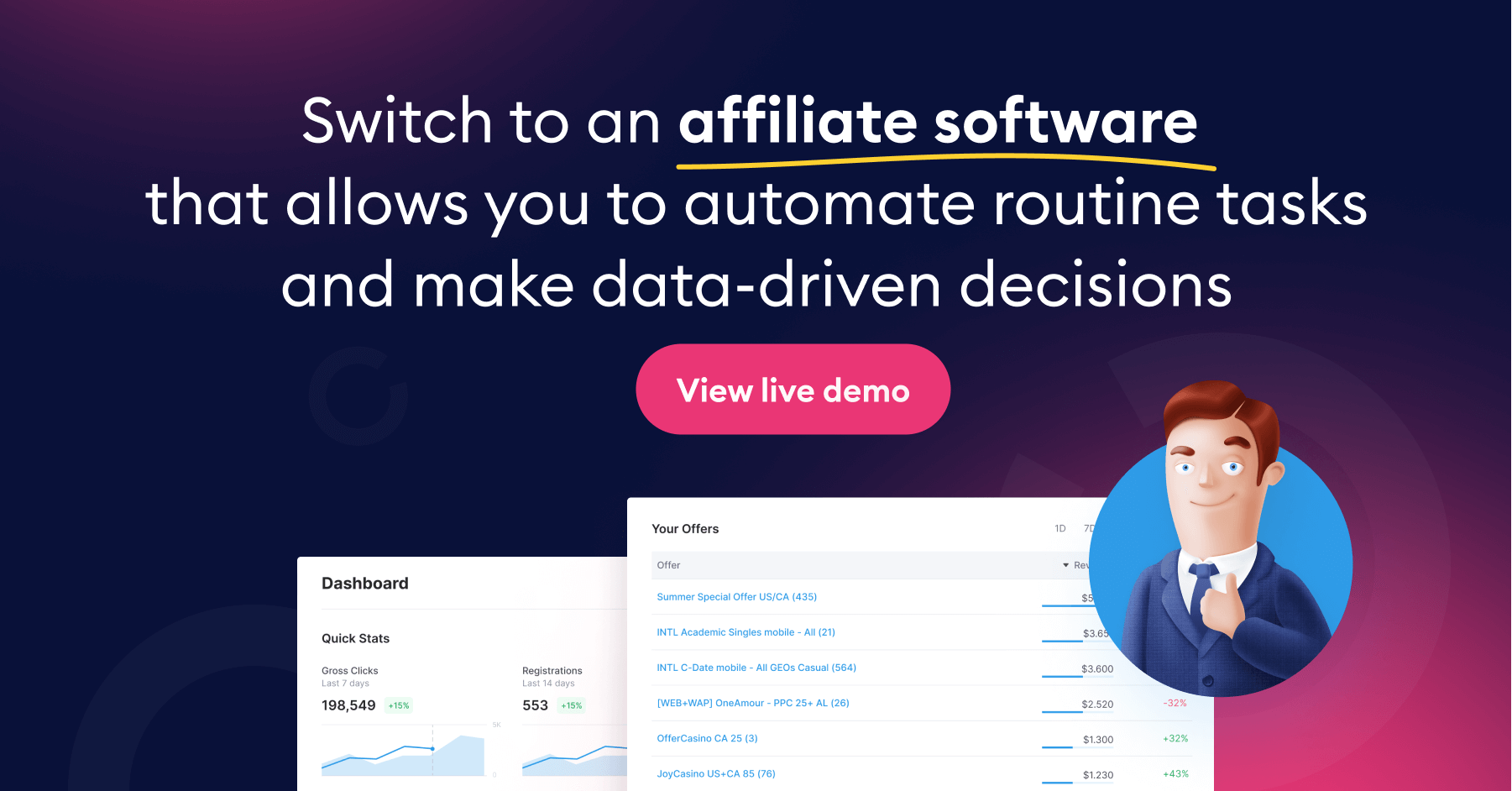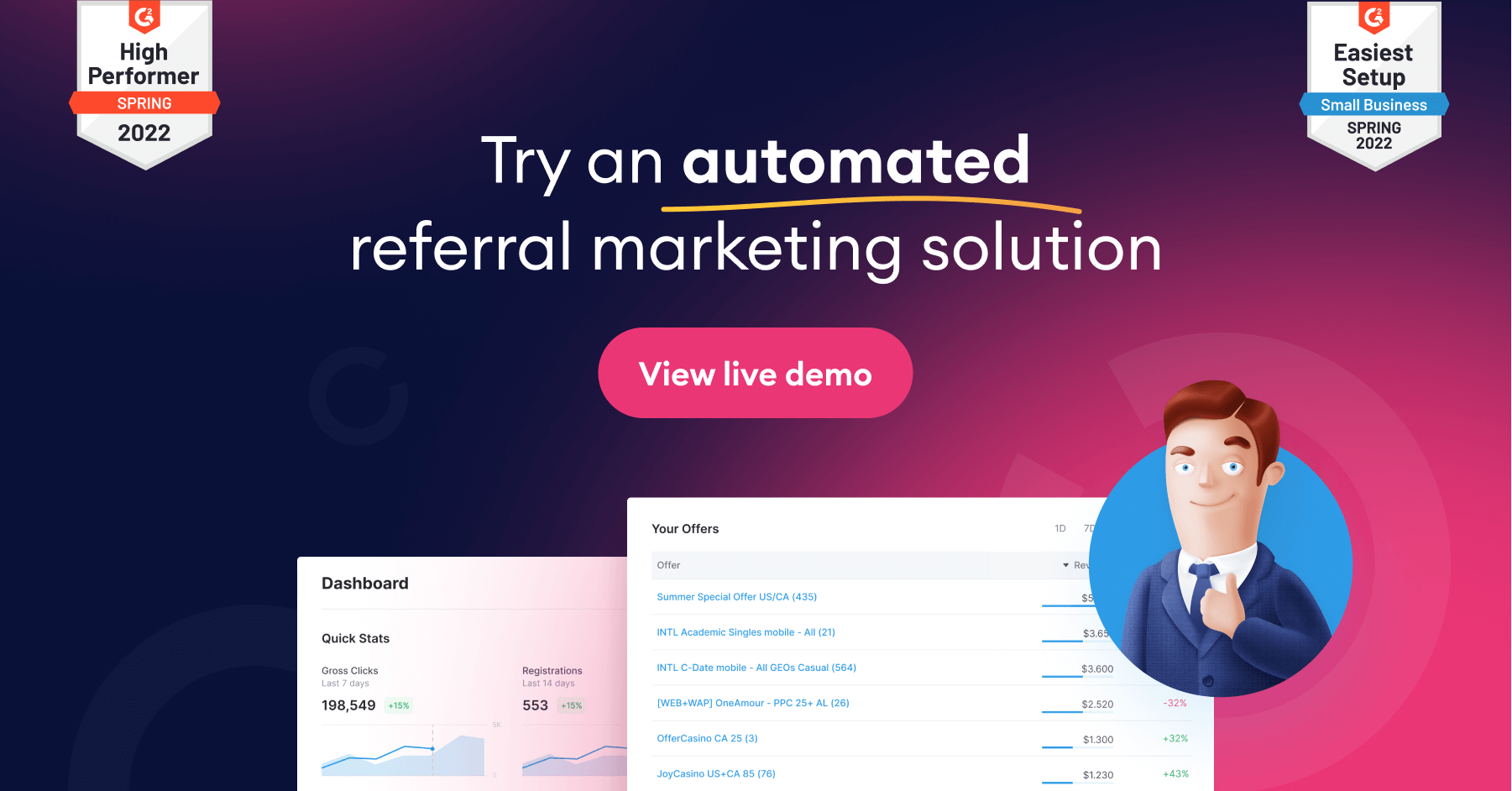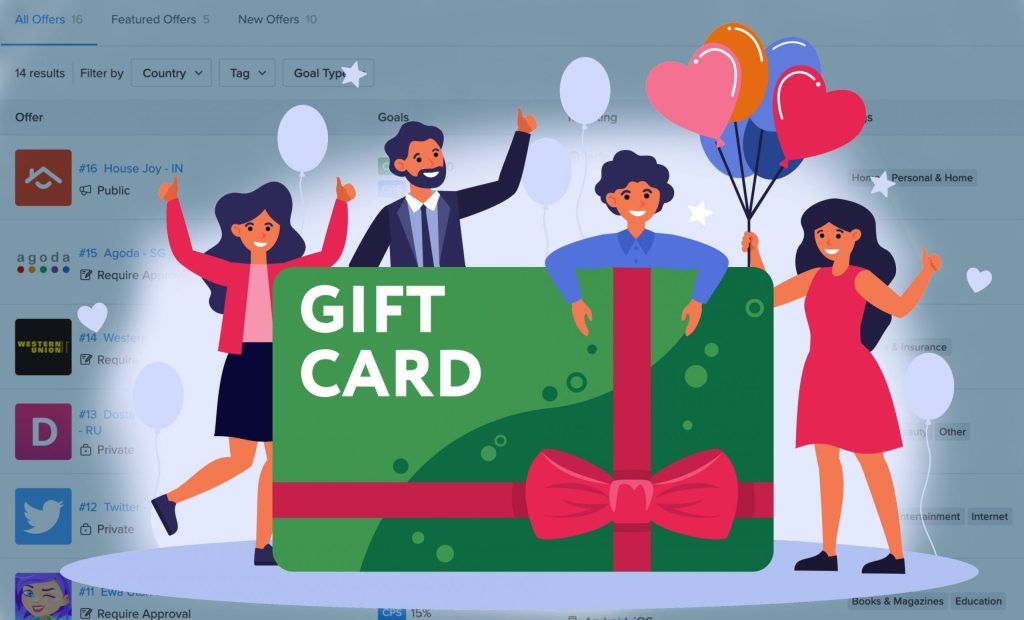A B2B customer loyalty program is a rewards program designed for companies that sell their products or services to other companies.
These programs typically offer benefits and incentives to customers who purchase from their company regularly, encouraging them to continue doing business with the company and increasing their overall customer loyalty.
In this blog post, we will discuss the benefits and drawbacks of these companies and help you decide if you need one for your business.
These programs can take many different forms, but common elements include the following:
- Discounts on future purchases.
- Access to exclusive products or services.
- Rewards for reaching certain milestones or spending levels.

B2B loyalty programs should be implemented by every company wishing to succeed in this sector. This well-known method ensures that your consumers are pleased and satisfied, resulting in a higher turnover.
B2B loyalty marketing programs are just as effective as their B2C counterparts. All you have to do is take a new approach. In this post, we will discuss how to make it work.
Customer loyalty can pose a concern for B2B businesses.
Why?
Despite having fewer consumers than B2C enterprises, the value of B2B transactions is significantly higher. B2B customers order bulk and are often bound by longer-term contracts and subscriptions. Not to mention that the average purchase value in the B2B sector is usually higher.
What are B2B customer loyalty programs?
Customer retention solutions with unique features and loyalty offers to assist businesses in developing brand loyalty with their client enterprises are known as B2B loyalty programs (or B2B rewards programs).
In terms of incentives, they differ drastically from their B2C counterparts.
Enterprises in this field seek to boost their market share, with the B2B eCommerce market alone anticipated to reach $1.8 trillion by 2023. One method is to keep existing clients or connections loyal, satisfied, and engaged.

A continuously excellent client experience should never be overlooked to encourage repeat purchases.
Customers are considerably more inclined to make repeat purchases from any brand when they have a positive and personalized experience.
You must rely on technology and software such as Scaleo to provide the right offer to the right end customer at the right moment.
Top Advantages of B2B Loyalty Programs
You can get significant rewards from creating a relationship with your clients.
Why is it important?
According to the XM Institute, loyal customers are:
- 5X as likely to repurchase,
- 4X as likely to refer, and
- 7X as likely to try new offers.
According to Forrester, increasing customer retention by 5% can increase profits by 25% to 95%.
It’s safe to say that the stats speak for themselves. But let’s break it down!
Increasing top-line revenue while boosting profit margins
Loyalty programs might include tools that encourage customers to try out more products and services, resulting in increased purchase frequency and spending.
Programs can also provide unique rewards based on seasonality or consumer purchasing behavior to encourage the sale of higher-margin products. Combining these products with creative premiums that offer strategic advantages to customers:
- a TV commercial featuring the consumer
- a shop makeover
- energy-efficient equipment
All help to move the relationship from a transaction to a partnership.
The more your customers connect with your brand and earn new rewards, the higher your revenue and profitability.
- They are lowering costs and increasing customer satisfaction.
When executed well, loyalty programs can replace blunt instruments such as discounting and heavy promotions with a precision instrument that minimizes monetary discounts while growing consumer advantages in both physical and intangible ways.
A better relationship will also make the customer contracting process easier and faster. These advantages add up to higher customer happiness, retention, and loyalty, as well as increased recurring revenue and profitability.
Promoting digital engagement and collecting helpful customer data
The B2C sector has demonstrated the importance of digital engagement. Beyond attracting and maintaining consumers, digital engagement creates the “engagement balance”: ongoing customer insights that drive ideas for new products and services, deepen customer relationships, and, as a result, help businesses develop.
The business-to-business industry has lagged in this regard, but loyalty programs can help jump-start digital engagement efforts. You may personalize digital channels and tactics to each consumer type, including the frequently overlooked small and medium-sized businesses.
And, as your digital transformation efforts progress, you can use big data and analytics to accelerate the engagement balance.
What Are the Differences Between B2C and B2B Loyalty Programs?
Now that we have mentioned B2C several times in this blog post, it is perhaps a good idea to outline the difference between them. Be aware that standard B2C rewards programs are not a viable pattern to follow when building your B2B customer loyalty program. Instead, construct the system from the ground up with features corresponding to the B2B market.
Here is a list of crucial distinctions to be aware of when comparing B2C and B2B customer loyalty program structures:
- Type of loyalty program
Because this structure was designed with frequent lower-value purchases in mind, earning and redeeming points is less successful for a B2B reward system. Tiers and incentives are a better fit for this market, as discounts are often subscription or commitment-based.
- Membership
B2C loyalty programs are typically free to join, and members frequently earn immediate enrollment rewards. On the other hand, B2B loyalty programs require clients to sign a contract or make a transaction. Furthermore, B2B reward systems are better suited to the subscription-based model if they provide meaningful benefits in exchange.
- Rewards
In terms of incentives, B2B loyalty programs frequently focus on rewards that provide business enhancement for the client or exclusive experiences, whereas B2C reward systems use discounts, double-point campaigns, and early access.
- Personalization
Personalization in B2C companies typically entails more relevant email communication and offer management that changes by segment. With a typically smaller and more critical (and demanding) customer base, B2B companies realize that certain rewards, such as training sessions, must be personalized to each client.
- Limited Time Offers
B2B companies cannot rely on FOMO, such as limited-time holiday deals, to encourage consumers to join, simply because the decision-making process is lengthier and more thorough. Instead, they should highlight the long-term benefits that members will enjoy.
- Data Collection
B2C companies use loyalty programs as an incentive to enroll clients and obtain their contact information simultaneously. B2B companies typically already have client contact information; nonetheless, they can employ incentive surveys to gather user input from their customer base.
How to Build a B2B Customer Loyalty Program?
You now understand why a B2B customer loyalty program is worth your time. But where should brands begin when creating one? How can they leverage the power of customer loyalty structure in their business?
1 – Start by calculating your current loyalty rates
To determine who is eligible for your B2B loyalty program, you need two types of customer data: Who are the most satisfied and loyal customers? And who is most valuable to your brand?
Helping you answer the first question is the Net Promoter Score (NPS), a customer survey system designed to help you identify your most loyal customers. It works by asking customers if they would recommend your brand to a friend or colleague and dividing them into three groups based on their responses.
Your promoters are most loyal, enthusiastic, and likely to recommend customers. These are the people your loyalty program should be targeting.
Many B2B companies offer loyalty programs only to their most valuable customers.
You’ll get a much more accurate idea of your customers’ loyalty when you combine NPS results with customer lifetime value (CLV) metrics.
2 – Choose your incentives and rewards
How would you reward your loyal customers? And what do you want to reward them for?
This brings you to the core of your customer loyalty program for business-to-business customers.
What types of incentives will you offer? Different loyalty programs work differently depending on the product, customer interactions and touchpoints, and pricing structure. Your rewards need to make sense to you.
For example, you can offer benefits such as access to unique content and educational materials. On the other hand, discounts on future purchases can be very effective.
What do you expect in return from your customers?
For example, B2B loyalty programs are often used in conjunction with referral programs to reward loyal customers who refer you.
You can also reward your customers for participating in social media, taking customer surveys, or attending your conferences. Of course, this phase also includes informing your customers about the benefits of participating in the loyalty program.
Mystery rewards may attract B2C customers, but B2B customers want to know they are investing well.
3 – Make it user friendly
Make signing up for and using the program as easy as possible. Ensure you provide tailored reward statements that send this information to program participants regularly so they do not have to log into the site until they want to redeem their points.
Provide your loyalty program participants with a user-friendly rewards website with all the necessary information (current point balance, earnings history, available bonus offers, etc.).
Customers who are loyal to your product or service become brand ambassadors.
4 – Assess your performance
Finally, you need to manage and monitor the data generated by your loyalty program. Never start a B2B loyalty program without a strategy to measure its effectiveness.
Studies show that specific loyalty programs can cost companies money, as described in our post on retention analytics.
How?
They don’t get a return on their investment since they provide too many benefits and incentives to customers.
That means to evaluate the performance of your customer loyalty program, you need to successfully assess it by measuring the following:
- Earnings from your loyalty program. How much revenue can you attribute to your loyalty program?
- It affects customer loyalty. Is your program affecting retention?
- Referrals. You might use your customer loyalty program to generate new customer referrals. You’ll need to know how many people are being brought in (and by whom).
- ROI. Loyalty programs are not free. However, by measuring your ROI, you can determine whether it is delivering to your bottom line.
5 – Adapt and adjust as you go
A rewards program should not be permanent. Programs should be developed in line with your business objectives, including learning from program evaluation and the market or business situation.
Because a rewards program is a data-driven tool, it is relatively easy to determine its effectiveness and profitability. B2B loyalty programs should also be profit centers.
To ensure that a program generates a high ROI, changes must be made to the structure, rules, and value offered as the program progresses and data is analyzed.
The cost of developing a B2B loyalty program
Before you begin budgeting, consider who will build your loyalty program. There are three things to consider:
- Planning it yourself
- Requesting a custom strategy from an agency
- Employing software for your loyalty program
This comes down to:
- management
- marketing
- customer loyalty software
This section is intended to include any expense that may be easily tracked. For example, the costs of human resources, marketing, and technology will vary depending on the breadth of your program, your incentives, and virtually everything you’ll need to make your B2B loyalty program a reality.
You must determine how you will pay commissions and reward your partners. It could be a fixed price, a percentage of revenue, or even bonuses for meeting certain goals.
A customer loyalty tracking software such as Scaleo can automatically track referral sales and pay out commissions if you reward your customers financially and directly. Loyalty payments can be made via any financial platform and should be specified in the marketing agreement.
You can pay monthly or after an additional purchase – it’s up to you! Remember that being too tight with your standards may turn off potential partners and clients.
Conclusion
It will not be long before loyalty programs take over the B2B market, especially as the economy recovers from its epidemic low. Customers’ switching fees will only increase as their relationships become more intertwined. That should be motivation enough for companies to get serious about their customers.
The main goal of any referral or loyalty program is to provide rewards that your end customers will appreciate. Since a B2B company operates differently than a B2C company, the rewards for loyalty programs need to include different considerations.
It’s important to understand that in the B2B market, you communicate with a group of people with different tasks and needs, not a single user (B2C).
This will help you better understand who your end users are and what value you can offer them, given their position and roles in their company.
Looking to start your own loyalty program for your business? Schedule a demo call with our representatives and see what Scaleo can do for your business.

What are B2B loyalty programs?
A B2B loyalty program is a marketing strategy that aims to strengthen relationships between businesses that sell their products or services to other businesses.
How do you build customer loyalty in B2B?
Proactively engaging with customers is the key to building loyalty. Instead of waiting for customers to reach out, take the initiative by starting conversations, asking for feedback, and providing valuable resources ahead of time.
What is the trend in B2B loyalty in 2024?
In B2B loyalty in 2024, the focus is on personalized, technology-driven, and sustainable programs that offer diverse rewards and experiences. By considering these trends, businesses can develop loyalty programs that are appealing and relevant to their customers.
Why have a B2B loyalty program?
B2B loyalty program opens a wide spectrum of options for your business: new partnerships and access to a new pool of potential customers.
Last Updated on April 10, 2024







